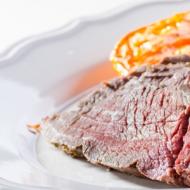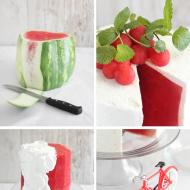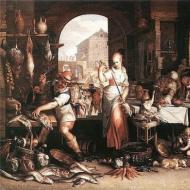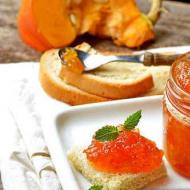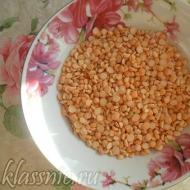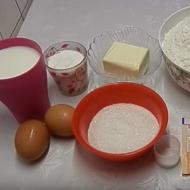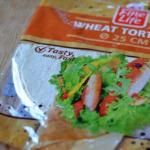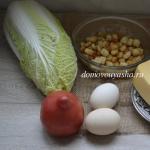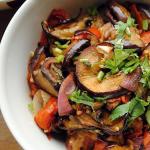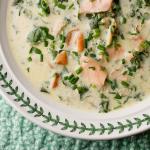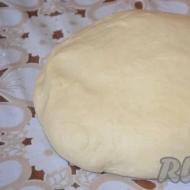
Easter cake with yolks. Easter cake with yolks (an old recipe) Easter cake with yolks
Even if you have your own proven recipe for the main holiday delicacy - Easter cake, try something new! The recipe for Easter cake with yolks attracted me precisely because of the yolks =) Our family simply loves marshmallows and meringues, so the freezer is full of yolks, which are always left over from other recipes. I usually put the yolks in an airtight container or in a special freezer bag and put them in the freezer “until better times.” In the recipe for this Easter cake, you can use as many as 6 yolks and still get delicious baked goods! So I decided to definitely try it! But even if you don’t have “free” yolks, be sure to try making this cake, it’s simply wonderful!

The structure of the Easter cake is delicate and looser than the traditional one, but at the same time it is truly “Kulich”. The crumb is aromatic, juicy and slightly moist. What else I liked about cooking: you can knead the dough simply with a spoon without getting your hands dirty.
Ingredients for the dough:
- Premium flour - 750 g + a little for breading dried fruits
- Dry yeast - 17 g (you can replace it with 50 g fresh)
- Milk - 300 ml.
- Egg yolks - 6 pcs. + 1 yolk for greasing Easter cakes
- Granulated sugar - 250 g + 1 tbsp. l. for preparing dough
- Salt - 3/4 tsp.
- Butter - 150 g
- Vegetable oil (I used sunflower) - 2 tbsp. l.
- Sour cream - 250 g (I take 15-20% fat content)
- Raisins – 150 g
- Candied fruits (you can use any dried fruits) - 150 g
- Rum (cognac or any other aromatic alcohol) - 60 ml
- Vanilla extract - 2 tsp. (can be replaced with vanilla sugar)
For protein cream:
- Egg whites - 4 pcs.
- Granulated sugar - 250 g
- Vanilla extract - 1/2 tsp.
- Lemon juice - 1 tsp.
For the white glaze:
- White of one egg
- Powdered sugar - 250 g
- Lemon juice - 1 tbsp. l.
How to cook Easter cake with yolks and sour cream (step-by-step recipe with photos):
First, sift the flour (about 750 g) through a fine sieve several times. I get by with 2-3 siftings. The flour is saturated with air, which will guarantee an airy crumb for the Easter cakes.
For the dough, we need 150 g of butter at room temperature, so we take it out in advance to warm it up. To speed up the process, you can cut the butter into cubes with an area of 1 square cm, so it will quickly reach the desired temperature.
All dried fruits that we will use (150 g) are washed and filled with hot water for 15 minutes.
Never pour boiling water over it! The raisins will soften and turn into porridge. Very warm, but not hot water (about 40-50 °C) is enough.
Cut candied fruits (150 g) into small cubes if they are large.

In a small bowl, mix 150 g of candied fruits and pure raisins, pour in strong alcohol (4 tablespoons) and leave to infuse at room temperature.

How to make dough for Easter cake
In a separate bowl (it’s better to take a deep one), mix warm milk (300 ml), 50 g of yeast and 1 tbsp. l. granulated sugar, mix. Leave at room temperature for 10 minutes.

Attention! If you decide to use dry yeast, take 17 g.
In a sweet environment, yeast activates faster, so it is important not to forget to add sugar to the dough. Choose the freshest yeast for making Easter cake: if it is raw, it should break well and not have an unpleasant odor. If you use dry yeast, be sure to check the expiration date and do not use yeast from previously opened packages.
As far as yeast maker goes, my favorites are:

Pressed yeast Lux Extra is sold in chain stores, including Magnit, Auchan, and Lenta. I like that they come in a small gram (100 grams), although it would be more convenient, of course, if the packaging were even smaller. Lux Extra yeast has never let me down, all baking is easy. I usually separate the amount of yeast I need (for example, in this recipe we need half the package), and immediately put the other half in the freezer and store it until needed again.
Of the dry yeasts, I like “Saf-moment” the most.

This is instant yeast in small packets that is sold in the baking section. I like yeast because it is fast-acting, it begins its work when mixed with liquids (that is, it does not need to be mixed with flour, like instant yeast), this method is more to my liking. The companies I have tested also include dry yeast from Pakmaya and Dr. Oetker, there were no problems with them.
So, after 10-15 minutes, the contents in the bowl will greatly increase in size. This suggests that we can continue the process further. If for some reason the yeast solution does not rise, then take all the ingredients for preparing the dough again and start all over again. There can only be two reasons for failure: initially the yeast was of poor quality or old, or you used milk that was too hot, which ruined the yeast.
The temperature of the milk should not exceed 40 C; if it is higher, the yeast will die!
Sift flour (250 g) into the yeast solution and mix well with a whisk until completely homogeneous.

The dough is ready! Cover it with cling film (or a cotton towel) to prevent it from getting too windy and put it in a warm place without drafts.

The dough matures within 30-60 minutes. First it doubles, and then, having risen very strongly, it falls. It is very important to wait for this moment, when the dough begins to wrinkle and fall off, which means it is ripe, we can continue the process further.

Kneading the dough for Easter cakes
Place egg yolks (6 pcs.) in a deep bowl, add granulated sugar (250 g), 3/4 tsp. salt and grind this mixture using a whisk, mixer and blender until it turns white and increases in volume.

Pour the rum (or other strong aromatic alcohol) in which the dried fruits are infused into the beaten yolks and beat thoroughly again.

Add the yolk mixture, well beaten with sugar, to the ripe dough, mix until smooth.
Now add vanilla extract (2 tsp) to the dough and mix again. The extract can be replaced with vanilla sugar (in this case, add 1 sachet - 10 g). Lately, I often use sugar with natural vanilla, it tastes much better than regular vanilla sugar:

This sugar is my favorite (on the list after vanilla extract, of course, nothing compares to it in aroma).
The next step is adding oils to the dough. We will need 150 g of butter, which by this time has already become soft and 2 tbsp. l. (30 ml) vegetable oil. Add them one by one, stirring each time until smooth.
Thanks to vegetable oil (I use regular refined sunflower oil), the Easter cakes turn out tender, and do not go stale for a long time and remain fresh.


Now add sour cream (250 g) with a fat content of 15-20% to the dough and mix thoroughly.

Add the sifted flour in small portions (about 500 g each), in several stages, kneading the dough directly in the container simply with a spoon or spatula.

I really appreciated the dough hook attachment that comes with almost every mixer or food processor.

The next task is to knead the cake dough until smooth and homogeneous. The dough should not contain lumps. We achieve such a thickness and viscosity of the dough that a spoon can stand in it (for this you may need a little more or a little less flour than indicated in the recipe).

The question of the amount of flour is always the most delicate. An excess of flour can ruin the whole thing: the finished cake will turn out so dense and sticky that you will feel sorry for the ingredients spent in the dough. Therefore, it is important to focus not on the numbers in the recipe, but on the consistency of the dough in the photo. This remark applies not only to Easter cakes, but to absolutely all recipes on my website!
Cover the bowl with the kneaded dough with cling film and cover with a clean towel.
Place in a warm, draft-free place for about 1.5-3 hours, until the dough has doubled in size. I usually place the bowl in the oven that is turned off (there are no drafts or unnecessary noise; they say that yeast dough reacts even to this))).

Mix raisins with candied fruits with 2 tbsp. l. flour.

Knead the risen dough and release the accumulated carbon dioxide from it, mixing thoroughly for about 1 minute.

Add prepared raisins and candied fruits to the Easter cake dough, stirring well until they are evenly distributed in the dough.
At this stage, the cake dough can be put in a cold place overnight, and in the morning warmed at room temperature for about 1 hour and then, after kneading the dough a little, continue the process.

Cover the bowl with the dough with a towel or cling film and leave to proof in a warm place for about 1.5-3 hours.

The dough should double in volume.

Knead the dough (you can moisten your hands a little with vegetable oil) and proceed to unfolding.

We spread the dough into pre-prepared forms (I use special paper forms for Easter cakes, which are sold on the eve of Easter on every corner). Fill the molds with dough to 1/3 of their volume.

You can use pans of various sizes and diameters as forms for Easter cakes: you just need to grease them with oil and sprinkle them with a small amount of flour (be sure to shake off the excess). Place a circle of baking paper on the bottom of the pan.
Cover the molds with the dough with a towel and place them in a warm place to proof (it may take 1-1.5 hours) until the dough rises almost to the edges of the mold.

The cakes that come up in the molds can be greased with yolk (optional), beaten with 1 tbsp. l. water.

Baking Easter cakes
Preheat the oven to 170-180 ºС.
Bake the cakes for about 25-60 minutes (depending on the size of the cakes) until, when pierced with a wooden torch, it comes out completely dry without sticking dough. My cakes were ready after 25 minutes of baking (tin size 9*9).

The oven should not be opened for the first 15-20 minutes after baking, otherwise the dough may settle. If the surface of the cakes becomes too brown, you can cover them with foil (mirror side up) or a piece of parchment soaked in water.
Cool the finished cakes a little and carefully remove them from the molds (if they are paper, there is no need to remove them). If the molds are ordinary, run a sharp knife along the walls, remove from the molds, remove the circles of parchment paper from the bottom and place on a wire rack to cool, covered with a clean towel.
How to decorate Easter cakes
I love decorating Easter cakes, which are cooked in a water bath. Firstly, there is no fear of contracting something from raw proteins, and secondly, this cream is so delicate and airy that it goes perfectly with Easter cakes. If desired, you can sprinkle the tops of the Easter cakes with confectionery sprinkles, decorate with flowers, themed figures made of mastic (for example, like mine - rabbits).

If you decide to use traditional egg white glaze for Easter cakes, prepare it as follows:
Beat one egg white until light foam, add 170 g of powdered sugar, mix with a fork.
Then add lemon juice (1 tbsp) and stir again. Next, you need to gradually add the remaining powdered sugar, stirring each time until smooth, until the protein glaze reaches the consistency we need.
Apply egg white glaze to well-cooled Easter cakes and decorate with Easter sprinkles if desired.
Especially for those who love video recipes, I recorded a step-by-step guide to making cream cake, enjoy watching!
How to store Easter cakes
Easter cakes will keep well in a closed pan or in a tightly tied bag. In this case, they remain tender, fragrant, tender for a long time and do not become stale for 10-14 days.
In conclusion, I would like to ask you not to be afraid of cold proofing of Easter cake dough. In this case, the amount of yeast in the recipe can be reduced, and the dough rising time can be increased. In the version with cold proofing of the dough, the cakes turn out to be especially tender and tasty; in addition, the sour taste of yeast, which often occurs in baked goods with the usual proofing method, is eliminated.
I hope you liked the recipe and the cakes turned out great! And if this year you don’t have time and inspiration for Easter cakes, bake them. Be sure to ask questions if they arise during cooking, share reviews and photos of the finished Easter cakes. It is very important for me to receive responses to this recipe!
When adding photos to Instagram, please indicate the tag #pirogeevo or #pirogeevo so that I can find your photos on the Internet and rejoice with you!
In contact with
Making a delicious Easter cake is a real art. If you are not afraid of difficulties and are ready to knead the dough for a long time, try this 100-year-old recipe.
These are the kind of Easter cakes that were prepared for Easter in the homes of nobles, since ordinary people simply could not afford to use 800 g of butter and 20 yolks for baking. But the taste is worth it. You definitely haven’t tried this kind of cake yet!
Ingredients:
- 20 eggs;
- 3 kg flour;
- 800 g butter;
- 1.5 liters of milk;
- 1.25 kg sugar;
- 30 g dry (or 120 g fresh);
- 200 g raisins;
- 1 pack of vanilla sugar;
- 50 g cognac;
- 200 g nuts;
- 100 g candied fruits;
- a pinch of salt;
- a few drops of lemon juice.
How to cook
Add 1 tsp to 100 ml of slightly warm milk. sugar and yeast. Stir to dissolve the yeast and leave in a warm place for 20 minutes. Take a deep container, as the yeast will foam a lot.
Separate the yolks from the whites and beat them with 1 kg of sugar. Add cognac, vanillin, warm milk, and suitable yeast.
Sift the flour into a large saucepan. Pour the liquid part into the flour, knead and leave for 20-30 minutes.
Add raisins, candied fruits and your favorite nuts to the dough.
Start kneading the dough again, gradually adding melted butter. You need to knead for a long time - about 40 minutes.
Towards the end of kneading, the dough will become easier to release from your hands and the walls of the pan.
The dough should be quite liquid - it cannot be gathered into a lump.
Place the dough in a warm place for another 1 hour. During this time it will increase significantly in size.
Preparing the dough forms. If you have metal ones, lubricate them with vegetable oil, and if they are paper ones, leave everything as is. Fill the molds 2/3 full and bake at 180-200 degrees until done (about an hour, depending on the size of the mold).
Prepare the fudge by whipping two chilled egg whites with a pinch of salt and a few drops of lemon juice into a stiff foam, adding 250 g of sugar or powdered sugar.
Pour fudge over the top of the still hot cakes and let them cool.
Delicious Easter cakes made with yolks are ready!
Haukarl - a rotting delicacy made from Icelandic shark meat
6th week of fasting: “Shuba” salad with seaweed and unusual sauce
Kazy in Zharkent style: delicious horse sausage at home
Easter recipes: meatloaf with quail eggs
Delicate Australian Lamington cakes from novice pastry chef Indira
Dishes:
3l saucepan
saucepan for 8-10 l.
molds for Easter cakes of different sizes 12-14 pcs.
bowls for milk, butter, margarine, yolks
All food and utensils should be warm, there should be no drafts in the kitchen, no one slams the door, quiet conversations, good mood. The flour should be sifted 2-3 times (in order to saturate it with air), the milk must be boiled and allowed to cool until warm, melt the margarine and butter, separate 20 yolks from the whites (2 whites in a separate glass)
Sift the flour and measure out 100 g. Sahara. In a 3 liter saucepan. pour in warm milk, knead the yeast into it, add 100 grams of sugar, mix everything and gradually stir in 800 grams. flour, carefully breaking up any lumps.
Leave the resulting dough for 50 minutes - 1 hour to rise.
This is what the finished dough looks like. 
While it is rising, grind the yolks with 3.5 cups of sugar and vanilla.
Take a large saucepan, pour into it all the dough, melted butter and margarine (warm), sour cream (not cold), mashed yolks with sugar, add salt (1 heaped teaspoon). Mix everything well and gradually add the rest of the flour, kneading so that there are no lumps. The dough should not be liquid. Cover with a towel and leave to rise in a warm place for about 1.5 hours. During this time, the dough will double in volume. 
And we will prepare the raisins: we will sort them out, rinse them in several waters, dry them well with a towel and roll them in flour (so that they are evenly distributed in the dough). 
After the dough has risen, start kneading it (this takes about 20 minutes). Sit down comfortably, place a pan to your right, pour vegetable oil into your hand, knead the dough thoroughly until it easily comes off your hand and from the walls of the pan. At the end, add the prepared raisins, distribute them well in the dough and set to rise again, covering with a towel.
At this time, prepare the molds: wash, wipe well and dry, coat the inside with vegetable oil, sprinkle with breadcrumbs or semolina. 
Once the dough has doubled in size, we begin cutting it up: put half of it on a greased table, tear it off, and place it in parts into the molds, filling them a little less than half, until we have used all the dough. Cover with a towel and let stand (approach). Preheat the oven to t 180. Once the dough in the molds fills their volume by 2/3, put the cakes in the oven to bake: larger ones towards the back wall, and in small molds closer to the back wall, do not open the oven door for 25-30 minutes.
Then you can check and reduce the temperature if the top is browned. To prevent the cap from burning, tall Easter cakes can be covered with parchment moistened with water. We bake the small ones for another 10 minutes, take them out, and leave the large ones to bake for another 20-30 minutes. You can check readiness with a wooden skewer.
Place the baked cakes directly in the molds on their sides on a table covered with two towels, cover with a third towel, and let cool. After this, carefully shake out of the molds and place on a tray.
This is the number of Easter cakes obtained from this volume of dough. We decorate to the best of our abilities and imagination: to prepare the glaze, beat 2 egg whites with a mixer into a good foam, gradually add 200 grams. powdered sugar (if you want the glaze to be softer, you can not use all the powder) and 1.5-2 teaspoons of lemon juice, if you want, then some essence. We coat the Easter cake caps and decorate with caramel topping (coconut shavings, sugar flowers or figurines). 


I hope that my notes will help you cope with such a task as baking Easter cake.
I foresee comments such as: “it didn’t work out, even though I followed the recipe exactly...
I just transferred the products."
Skills cannot be achieved without experience, and experience comes with practice. This is my advice to young people
housewives
May everything work out for you!
Easter cake with yolks (an old recipe)
(the portion is large, it turns out about 5 kilogram and 5-6 0.5 kg Easter cakes)
The dough is rich, sweet, airy, does not go stale for about 10 days)
20 yolks
400 gr. butter
100 g margarine
100 grams of vegetable oil (I used mustard oil, the baked goods do not go stale for a long time and take on a beautiful shade)
200 g sour cream
150 gr. fresh (live) yeast
700-800 g sugar (for those who like it sweeter (900-1000 g)
A pinch of salt and soda.
1 liter of milk
Flour (premium grade) approximately 3-4 kg
Raisins, candied fruits, dried apricots, nuts, spices.
Preparation:
We make the dough: dissolve yeast and sugar in warm milk, add flour and knead the dough until the consistency of thick sour cream. Place in a warm place to rise. At the same time, mix twice.
When the dough is ready, make the dough.
First, grind the yolks with salt (I also grind 1-2 teaspoons of saffron in a mortar, dilute it in cognac + add a pinch of ground ginger, cardamom, orange zest)
Add the yolks into the dough and mix. Then melt the butter and margarine, add half a portion of vegetable oil (I use the rest when kneading), sour cream, a pinch of soda and add all this to the dough.
Sift the flour 2-3 times (this is necessary, it is saturated with oxygen and the baked goods become light and airy)
Mix the dough. The main thing here is not to “clog” it with flour, the dough should not be (alive) dense, this time it took me exactly 3 kg of flour. (another trick: when you knead the dough, do not add flour, but add vegetable oil (I poured it on my hands and kneaded)
Knead the dough for at least 30 minutes, it should be airy and seem to “crack” under your hands. At this stage we do not yet add the raisins and other ingredients.
Place the dough in a container, cover with a cotton towel and place in a warm place to rise. (I have a 10L enamel bucket)
The dough should increase 2-3 times.
Then knead it again, and at this stage add the raisins and other ingredients. Who loves what?
I added raisins, dried apricots, cherries. (On the eve of baking, I soak raisins and dried apricots (I just take dried apricots, they are hard) in 1 liter of orange juice with brandy or cognac (about 2-3 tablespoons), pour in the dried fruits and leave for 2-3 hours. (I bring the orange juice to a boil) Then I put everything in a colander, chop the dried apricots to the size of raisins. I did not soak the cherries, because they were soft.) Immediately before kneading, I roll all the ingredients in flour.
I knead the dough with them already.
Again I leave the dough to rise.
When the dough has risen for the second time, I form balls (the dough does not need to be beaten and mixed much) and put no more than 1/3 in the molds, put it directly in the oven to rise and rise (attention, there must be convection and the temperature should not exceed 40 C) the door is half open.
When the dough has risen, brush it with egg very carefully and set the temperature to 190 C.
Keep an eye on the cakes without opening the oven. The dough is very airy and the cakes bake very quickly. After 15-20 minutes, I lowered the temperature to 160, covered the tops with foil and finished baking for about 10-15 more minutes. Also consider the size of your Easter cakes. I baked the very small ones separately, they just baked instantly.
I take the hot cakes out of the oven and just put them aside (I don’t cover them with anything, I don’t turn them over, I don’t lay them on their sides, because the dough is very tender and they can just get wrinkled).
Decorate to your taste.
One of the main attributes of Easter is Easter cake, symbolizing the beginning of a new life. However, not every housewife can boast to her guests of truly delicious home-made Easter pastries. The solution to the problem is simple. It is enough to use proven Easter cake recipes and learn the basic secrets of its preparation.
Sweet baked goods with ghee
| Ingredients | Quantity |
|---|---|
| sifted flour - | 2 kg |
| milk - | 500 ml |
| yolks - | 8 pcs. |
| dry yeast) - | 20 g |
| sugar - | 2 tbsp. |
| melted butter - | 200 g |
| vegetable oil - | 100 ml |
| raisins, candied fruits - | 250-300 g |
| vanilla sugar - | 20 g |
| egg white (needed for glaze) - | 1 PC. |
| lemon juice - | 2 tsp |
| powdered sugar - | 250 g |
| salt - | a few pinches |
| sprinkles - | For decoration |
| Cooking time: 420 minutes | Calorie content per 100 grams: 320 Kcal |
Let's look at the first step-by-step recipe; you will undoubtedly enjoy baking according to it.
To prepare the dough, add yeast, granulated sugar (2 tbsp) and flour (1 tbsp) to 200 ml of milk heated to 30-38 0 C. Cover the dough piece with cling film and keep warm for about an hour. The dough will double in volume and begin to settle.

For the sweet part of the dough, the yolks are mixed with salt, sugar, incl. vanilla. The mixture is ground until white and doubled in volume, combined with melted butter, warm milk and half of the vegetable oil.

The yolks are carefully poured into the dough, sifted flour is added in portions.

Knead the dough for Easter cakes until soft and manageable.

Cover the dough and leave for 3-4 hours, periodically kneading it to release the formed carbon dioxide.

Candied fruits and raisins should be rolled in flour and mixed into the dough.

Put the dough back in a warm place for 3 hours or put it in the refrigerator overnight, then knead it a little on the table. Grease the pans with butter, dust them with flour and line their bottoms with parchment paper.
The molds are filled halfway with dough and left for an hour in a warm place. The pastry is baked in an oven preheated to 180 0 C for 30 minutes to an hour. The readiness of the Easter cakes is checked using a toothpick.

Remove the finished baked goods from the mold by running a knife along the sides, place on a wire rack, cover with a towel and let cool. Decorate with glaze (beat the whites with a fork, combine with powder, add lemon juice). Quickly coat the cakes with glaze and decorate to taste.

Easter cake with yolks and milk
Any housewife can prepare an airy, sweet and tasty Easter cake with yolks and milk. The following components will be needed:
- milk - 1000 ml;
- flour - about 3 kg;
- yolks - 20 pcs.;
- sugar - 1 kg;
- yeast - 100 g;
- margarine - 250 gr;
- sunflower oil - 50 ml;
- butter (preferably homemade) - 200 g;
- sour cream - 3-4 tbsp;
- strong alcohol (vodka, cognac) - 1 tbsp;
- vanillin - 0.5 tsp;
- dried apricots - 200 gr;
- raisins - 300 gr;
- salt - 1 tbsp.
Easter baking time: 6 hours.
Calorie content of holiday baking: 330 kcal/100 g.
Leave the dough of milk (30-38 0 C), yeast, a glass of sugar and a few tablespoons of flour in a warm place until bubbles appear and the volume doubles (about an hour). Melt butter and margarine, cool.
Beat the yolks thoroughly with sugar, add vanillin and combine with the butter mixture. Add vegetable oil and sour cream, salt. Mix the yolk mixture with the dough, add sifted flour (2 kg) and leave in a warm place for an hour.
Add the remaining flour to the risen dough and knead until the dough slightly sticks to your hands. Leave it to rise again.
Pour alcohol into finely chopped dried apricots and raisins, mash them with your hands, add a spoonful of flour and combine with the dough. Fill the greased molds one-third to half full with dough, leave for about an hour and place in the oven, heated to 180 0 C for 40-60 minutes.
Check readiness with a wooden skewer. Remove the cakes from the molds and cool completely. You can decorate the baked goods with icing and chopped almonds.
Tsarsky Easter cake with cream
A truly royal treat can be prepared for the Easter table in the kitchen itself. For the cake you will need the following products:
- cream - 550 ml;
- yeast - 50 g;
- sifted flour - 1.2 kg;
- yolks - 15;
- granulated sugar - 200 gr;
- butter - 200 gr;
- candied fruits and raisins - 100 g each;
- almonds (peeled, dried in the oven and chopped with a knife) - 50 g;
- cardamom - 8-10 grains;
- a pinch of ground nutmeg;
- breadcrumbs and vegetable oil for greasing the pan.
Cooking time: 3.5 hours.
Calorie content of baked goods: 320 kcal/100 g.
In a glass (250 ml) heated to 35 0, dilute yeast with cream, add 40 g. flour and knead the dough. Leave the dough in a warm place for half an hour. Melt the butter, let it cool, combine with the yolks and sugar, beat until slightly increased in volume.
Combine raisins steamed in a glass of boiling water, chopped candied fruits, nutmeg, almonds and crushed cardamom grains. Combine the dough with the yolk mixture, add cream, remaining flour, prepared raisins with candied fruits, almonds and spices. The dough is thoroughly kneaded (at least 20 minutes) and left warm for 1-1.5 hours.
Knead the dough again (5 minutes), put it in greased and sprinkled with breadcrumbs molds and place in the oven preheated to 160 0 C degrees for 15 minutes. After which the oven temperature is increased to 190 0 C, the baked goods are covered with foil and brought to readiness (from 15 to 30 minutes).
The Easter cakes are removed from the oven, placed on their side for 3-4 minutes, removed from the mold and allowed to cool completely upside down, after which they are decorated to taste.
Easter baking from Yulia Vysotskaya
The recipe for Easter cake from the famous chef is quite simple, and the result exceeds all expectations. The following products should be prepared:
- milk - 150 ml;
- eggs - 6 pcs.;
- flour - 600 gr;
- sugar - 160 gr;
- yeast - 40 g;
- melted butter - 160 g;
- vanillin - 1 tsp;
- a pinch of salt;
- candied fruits, raisins, nuts and - to taste;
- sunflower oil or oiled paper for forms.
Cooking time: 3 hours.
Calorie content: 320 kcal/100 g.
Combine milk heated to 30 0 C with two tablespoons of sugar, yeast and a glass of flour. Mix, cover and leave warm for half an hour. Pour butter (melted), pounded yolks with granulated sugar into the suitable dough, add vanillin and salt.
Add the remaining flour and the chilled whites, whipped into a stable foam. Leave the dough to rise for an hour. Then combine with nuts, steamed raisins, candied fruits cut into small cubes, knead thoroughly.
Fill greased molds ½ full with dough and after 20 minutes place in an oven preheated to 170 0 C. Baking time ranges from 40 to 60 minutes. Decorate the cakes to taste - with icing, sprinkles, dried fruits.
Note to the hostess
- To facilitate the process of kneading the dough for Easter cakes with yolks, vegetable oil can be used to lubricate your hands;
- Do not rush when preparing the dough. The longer you knead it, the better the baked goods will be;
- The cakes should be stored in a pan lined with a towel. This will keep the baked goods fresh for at least a week;
- The choice of products for Easter cakes should be approached responsibly. The flour must be exclusively of the highest grade, the eggs must be fresh and homemade, and the butter must be natural.
The main secret can be called a good mood, which determines how the main dish of the Easter table will turn out. Having mastered simple recipes, you will be able to delight your loved ones with high-quality homemade baked goods every year.


